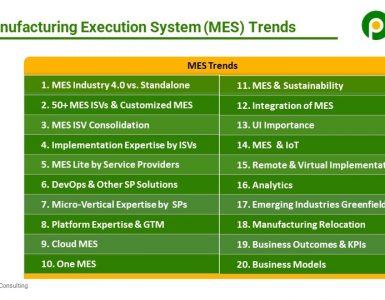L&T is acquiring 20.3% stake in Mindtree and with an open offer and further share purchase, it plans to increase its stake in Mindtree north of 50%.
I have been tracking both Mindtree and L&T Group companies in the IT sector, namely L&T Technology Services (LTTS) and L&T Infotech (LTI) for several years now. In fact, I wrote about Satyam acquisition battle between Tech Mahindra and L&T way back in 2008-09.
I have also been following developments in the last few months about Mindtree’s stake sale through friends in the media and the investment community. I believe L&T investment in Mindtree makes sense and is a value creation move for both L&T and Mindtree. The yardstick to check this is whether there are new growth opportunities created for both Mindtree and L&T group because of this transaction and what are some of the challenges it needs to overcome.
I see in particular two notable growth opportunities
- L&T Group domain expertise: L&T has group companies operating in EPC, industrial equipment, oil and gas, defense, finance, smart cities, and real estate. Mindtree can extend its industry-leading travel and transportation vertical to airports, smart cities and broader real estate market with the help of L&T. I will argue that the growth of TCS which has been spectacular and different from other Indian tier-1s is because TCS is able to leverage domain knowledge of the Tata Group. I have heard similar stories about how LTTS leveraged L&T Group expertise in scoring above competition and winning deals.
- 360-degree partnerships leveraging L&T Group power: L&T is a customer of many large global enterprises such as UTC, Cisco, and Intel. These enterprises may be interested in strengthening their L&T partnerships by utilizing IT and engineering services of L&T Group companies. LTTS has many examples of 360-degree partnership with such customers. Mindtree can gain from similar partnership opportunities.
Where is the IT industry heading? Where is the puck going to be?
As the IT industry is maturing, consolidation is on the rise. Every mid-tier IT firm unless it is very niche will sooner or later be absorbed in the larger group. Consolidation helps in reducing SG&A and increasing margins. A consolidated service provider can leverage scale and make better investments in R&D, patents & incubating new skills. Also, consolidated service providers can increase its likelihood for larger deals.
The question before mid-tier companies is this: are you a consolidator or target? IGATE, Syntel, Intelenet, Aricent, Geometric were all acquired by larger IT groups recently. Other mid-tier firms such as Mphasis, Hexaware, Zensar, GlobalLogic are acquired by PE firms. Another mid-tier firm NIIT is going through an acquisition process as I write.
In engineering services, LTTS became the largest pureplay engineering services provider by growing above 30% due to the backing of L&T Group and imbibing its rich engineering heritage, whereas other pure play services firms chose to get acquired.
The choice before mid-tier service providers will be either getting acquired by a PE firm, large IT firm or a conglomerate. I believe the conglomerate investment is better than PE investment from a growth perspective. PE investors will bring mainly money and will dress it up for future sale. In some cases, they bring clients from their portfolio, but their gestation period is 5-6 years, and they might not invest in incubating growth opportunities which take a long time and instead turn to short term opportunities for margin improvement. A strategic investor will not look for short term sale and may be interested in long term growth opportunities.
Some of the challenges I hear which can go against this deal are internal competition, culture, customers and employees. Yes, these are challenges no doubt, but they can be worked out.
- Internal competition between three L&T Group companies: This is not uncommon for a conglomerate to create different companies in the same sector with focusses on different niches in their independent ways and these firms both compete and collaborate depending upon opportunities. Tata Group has three companies in IT sector – TCS, Tata Elxsi, Tata Technologies which both compete and collaborate with each other. Two of them are doing very well and all benefit from the Tata Group heritage. L&T Group already operates LTTS and LTI as two different firms and they both compete and collaborate depending upon opportunities.
- Culture: Mindtree has a unique culture from first generation entrepreneurs. L&T Group has done a great job in creating a healthy services culture in LTTS and LTI, very difficult from say a manufacturing firm. The results of LTTS and LTI speak for itself. I think both cultures can be combined and create a much stronger entity. For example, Tech Mahindra and Satyam acquisition worked out well. Tech Mahindra has the same service culture inside a manufacturing firm as L&T companies have and Satyam had the culture of first generation entrepreneurs as Mindtree. The resultant synergies were favorable and made Tech Mahindra much greater and stronger than what the two companies were individually.
- Shift from founders to professional management: Human life is finite. So at some point enterprises will transition from founders either to next generation of founder’s kin or to professional management. We have plenty of examples where these transitions worked and have not worked. See the growth in some parts of the Reliance and Birla conglomerates where the management control is being transferred to founder’s kins. Similarly, there are numerous examples on either side where professional management from founders have worked or not. Even Infosys faced similar challenges. Biggest turnaround in the global tech industry happened when Microsoft transitioned to professional management under Satya Nadella from the founders. So neither option is bad or good per se. It depends on how effectively the transition is managed and also the capability of people running business post transition.
- Customers: I have been an IT services customer myself in my past roles and keep interviewing customers for my living. I think customers value people, skills and solutions. From management or in case of a change in management, it is about retaining focus, commitment, and future investment If firms such as UTC, Intel, Cisco, Scania and others can trust L&T Group companies for IT and engineering needs, it shouldn’t be a problem for Mindtree’s customers. All the more, the customers will rest assured that a financially sound group which is interested in investing in IT services is behind Mindtree.
- Employees: Employees are the core capability in the service industry. If they are not happy or treated properly, they run the risk of leaving and creating disruption. The reputation of L&T as an employer is good and attrition in their LTTS business is lower than many large peers. This risk can be managed.
My unsolicited recommendation to
L&T
- Let Mindtree run as a separate firm by founders or professional management for another 3-4 years and accelerate its growth opportunities like they are doing with LTTS. (Note- L&T has already publicly stated that they plan to keep Mindtree independent and let it run by founders or professional management team for now.)
- Consolidate only when firms are ready. Often mid-tier companies are not able to transition to large firms. When a mid-tier approached threshold of becoming larger firm, it loses its advantage of focus, relationship, agility. Large firms need to think differently and need to be process oriented. Today combining all three (LTI, LTTS and Mindtree) will achieve a run rate of $2.8 billion. I think when the run rate of around $4- $5 billion from these three firms is achieved, L&T Group should think of combining all these firms and derive benefit of scale. Even N. Chandra in Tata Group is trying do the same by combining 100+ group companies into few large companies across 10 sectors and thus benefit from scale.
- Meanwhile acquire other complementary companies also depending upon balance sheet and opportunities available. These firms could be where LTI, LTTS and Mindtree are not very strong and L&T Group can pass on benefit of customer access and domain knowledge to them. L&T group can acquire companies in BPO, digital (agency), management consulting, cyber security, design thinking etc. Also acquire companies with geographical footprints in Europe, Latin America, Japan, and China.
- If combining all of the above, L&T can make a run rate of $8-10 billion IT & technology services business in the next 5 years, it will make L&T among top 5 IT firms in India and top 15 in world based on current trends and truly a global company with complete suite of services across industries and geographies similar to Accenture and IBMs of the world.
Mindtree
- This is a black swan moment which arose from a large investor’s exit (Why he exited is another interesting story heard from different sources and nothing to do with current or future performance of Mindtree =)). The large investor could have been replaced by another financial investor, IT firm or conglomerate. As discussed earlier, a respected conglomerate can offer more growth opportunities. What took you to near the billion dollar mark will not necessarily take you to the next phase.
- Look for growth opportunities leveraging L&T Group which will be in the interest for all including founders, employees, and shareholders.
A lot can happen over coffee (tag line of VG Siddartha’s Coffee Day) and at the same time coffee can also slip between the cup and the lip. Hope this is amicably resolved and value is created for employees, management and investors of both L&T Group and Mindtree.






 Pareekh Jain
Founder of Pareekh Consulting & EIIRTrends
Pareekh Jain
Founder of Pareekh Consulting & EIIRTrends
Add comment